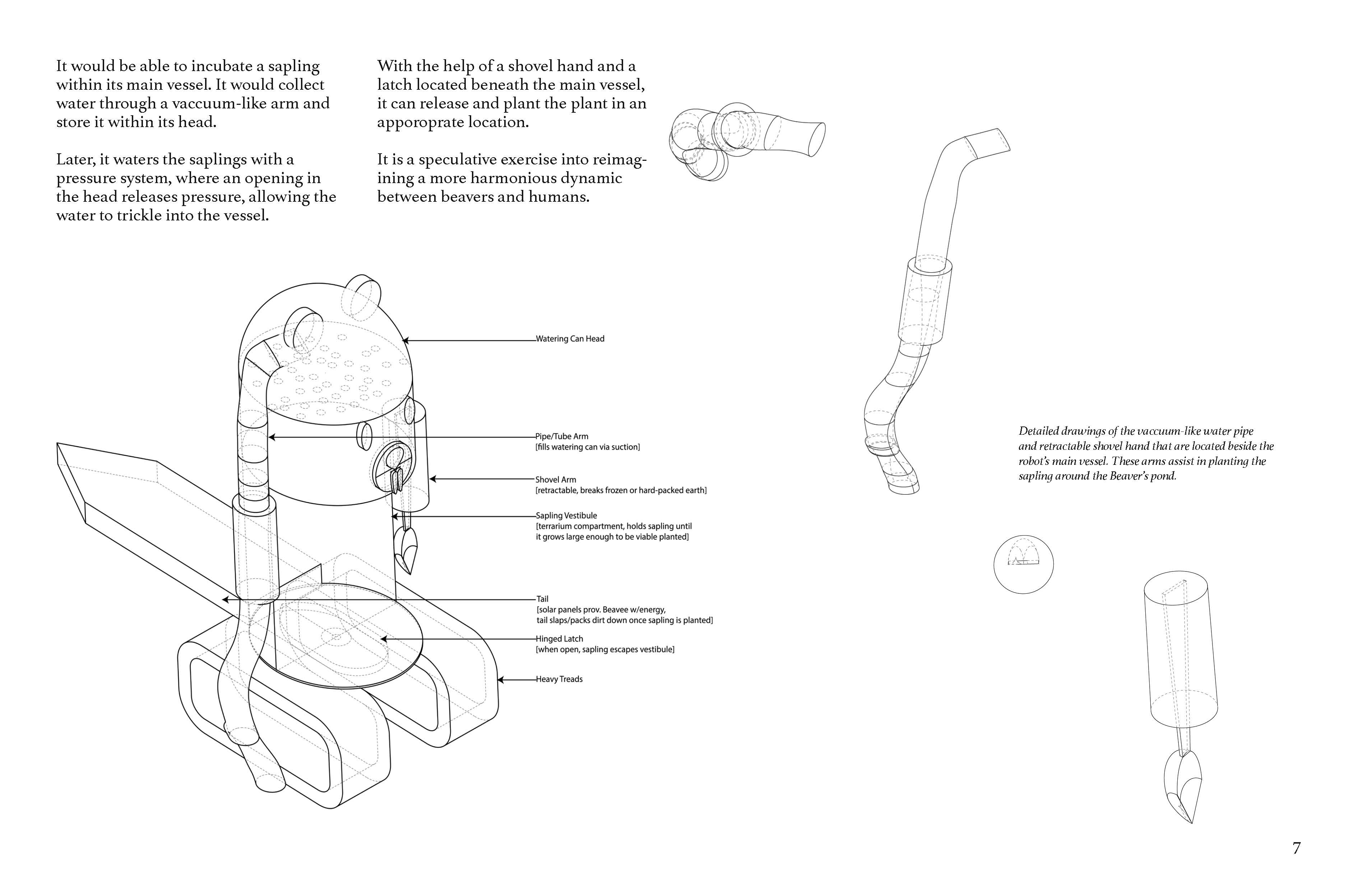Rosa Weinberg is a design educator and artist based in Massachusetts.
CREATIVE PRACTICE
Attunement
Shimmer
Digital Polished
Breathing
Love is About
Anna’s Delight
Stethosuit
(more)
TEACHING
Beaver Centered DesignExtraordinary Ordinary
User-Centered Design
Juxtapose
Intro to Architecture
Easing Cerebral Palsy
Neighborhood Marvels
(more)
misc.
Speaking + WritingPress
Bio
Contact











Beaver Centered Design
2021
SCHOOL
Smith CollegeCollaborators
Mike Callahan, Emily Norton, Jakob ShockeyRunner-up for Core77 Design Education Initiative (click for more info)
Article about the course (click to read)
Beaver Centered Design (BCD) was a six-week project that introduced architecture students to a new way of looking at the relationship between the human and non-human world. BCD is both a critique of Human-Centered Design–which sometimes ignores the natural world–and how architecture is taught–which often ignores humans. This was the first project for the advanced architecture studio at Smith College in the Spring of 2022. Students, in teams of two, were asked to design and fabricate a device or installation that responded to the needs of beavers.
The goals of this project were to expand students' woodshop, collaboration, CAD, and representation skills, while introducing them to speculative design. Students came to know beavers through observational exercises, expert interviews, and secondary research. Human-Centered Design activities and worksheets were chosen and adapted to apply to this non-human species. Projects covered the speculative, a Beaver Trap Trapper; the playful, a toy that builds empathy for kids; and also the practical, a robot that plants Aspen, a tree of choice for beavers. Students created posters with diagrams, sketches, and renderings, to supplement the work they did in the woodshop. Student work will be displayed as posters at BeaverCon in Maryland in June 2022.
Why Beavers?
Wetlands are part of a nature-based approach to climate resilience. While humans can spend hundreds of thousands of dollars and use construction equipment to create wetlands, beavers do it best. Like humans, beavers drastically alter their ecosystems. Unlike humans, beavers create habitats for thousands of species. These habitats serve as carbon sinks, fire breaks for wildfires, and they raise water tables preventing draught. During the fur trade from the 1600's to the 1800's, beaver pelts were highly valued as the raw material for waterproof hats in Europe. Once the Eurasian beaver population was decimated, trappers came to the new world and nearly trapped the North American Beaver to extinction. This trapping powered western expansion across the United States. Wetlands were drained, and humans settled in former floodplains. When Europeans arrived in North America, there were some 400 million beavers. By 1900 that number was reduced to a hundred thousand. Today, beaver populations are rebounding. As the beaver population rebounds, there are increasing conflicts between humans and beavers, flooded farmlands and roads, and the downing of precious trees. I became enchanted with beavers when they moved onto my family's land during quarantine, bringing a nearby wetland to life. Landowners (including my family) have typically responded with trapping; however, there are other options. Beaver allies are looking at ways to coexist with beavers through devices that moderate flooding and tree felling.
read more...
Beaver Centered Design
2021
SCHOOL
Smith CollegeCollaborators
Mike Callahan, Emily Norton, Jakob, ShockeyRunner-up for Core77 Design Education Initiative (click for more info)
Article about the course (click to read)











